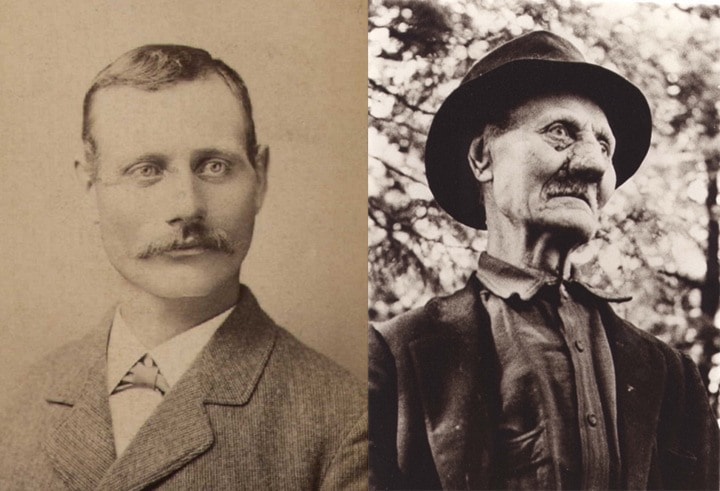When he died on January 12, 1950, Ole Skattebo was tiring of life. He had witnessed many changes at his beloved Slocan Pool, which added greatly to the weight of his 96 years. The salmon were gone and he was surrounded by ghosts. Memories persisted of a pristine river whose bounty had been harvested for millennia by natives, whose occasional habitation slowly shifted across the river and then gradually faded away.
He first set his eyes on the fabulous pool below the Kootenay River cascades in 1898. Even then changes were afoot: a railway had been built along its banks and the first hydroelectric plant at Lower Bonnington Falls was coming online. He built a cabin and started prospecting at promising locations, some of which turned into claims.
In due time he had a job he cherished: the CPR wanted to tap the tourist potential of the superb fishing site and imported a fleet of rowboats. A railcar parked on Fraine siding served for guest accommodation until Creel Lodge was completed. They needed caretakers and fishing guides, and Ole slipped into the career that turned him into a legend.
He and Jack Killey catered to the needs of guests, some of them famous and others relatively unknown. As he could now reside at Creel Lodge, Ole sold his cabin. He was meticulous in his work and set high standards for his art. Ole did not think much of gang trolling and he extolled the skill of fishing with a fly. Many company executives as well as famous travellers fell under his spell and retained life-long memories of the charm of the place and the man that overshadowed it.
Below: A typical postcard sent by Ole to his niece Ida in 1908. (Courtesy Earl Hansen)

 Ole had left Norway for America, as did his other siblings. His first efforts at making a living from the land were through mining in the Black Hills of Dakota Territory. While tamping down powder into a blast hole the brothers set off an explosion which killed one of them and disfigured Ole’s face with rock shrapnel. Ole headed west and gradually worked his way to the West Kootenay around 1896. The lure of the Rossland ores attracted his attention for a year before he sought out the place where the power to run the mines would come from.
Ole had left Norway for America, as did his other siblings. His first efforts at making a living from the land were through mining in the Black Hills of Dakota Territory. While tamping down powder into a blast hole the brothers set off an explosion which killed one of them and disfigured Ole’s face with rock shrapnel. Ole headed west and gradually worked his way to the West Kootenay around 1896. The lure of the Rossland ores attracted his attention for a year before he sought out the place where the power to run the mines would come from.
A major upheaval entered his life in 1927 with the decision by West Kootenay Power & Light Company to build their third dam on the river, just above the Pool. The former CPR property would become the operational centre, and Creel Lodge a guest house. Ole relocated his operation slightly downstream to his old cabin, which he obtained from its latest owner, Archie Johnson. It was known as Skookumchuck, the place of fast water. Here he continued to ply his trade, now unencumbered by management.
The power company provided occasional employment and started treating him as one of their own. The late Dave MacDonald could never forget a grinning Mickey Byrne loading up his sled with essential provisions, a huge ham and Christmas treats, and dispatching the boy to the old man.
The 1940s brought more degradations and losses. Brilliant Dam was rushed ahead for the war effort and led to even greater changes to the fishery once the Pool merged with the new reservoir. Furthermore, Ole’s business dried up as wartime security measures kept customers away. The power company organized a pension for the ageing sage and ran electricity to his cabin to provide heat and light. Company employees and their children took on the obligation to look in on him and render whatever assistance they could. It was while shovelling off his pathways that linemen found Ole’s body under the snow.
Always a conservationist, he resorted to writing letters in which he criticized the catch limits, which failed to recognize the declining fish population. It is only fitting that Dave MacDonald, a life-long friend, was able to have the Brilliant reservoir named after him.
During my research I connected with Earl Hansen, the grandson of the oldest brother, Reier. He was thrilled at my efforts to preserve Ole’s name with a trail as well, and we became letter-friends. One particularly touching item he shared with me was a sampling of postcards Ole had written to his mother, Ida Hansen, all in 1908. In total he had sent 37. Ida died two years later. I wondered why all the cards were sent in that one year, but in the end I decided it was best not to ask.
Some things are better left as mysteries.
Walter Volovsek’s website can be found at trailsintime.org
Previous installments in this series
Intrigues: Castlegar’s lacklustre childhood
Perceptions: Adrift on the River of Life
